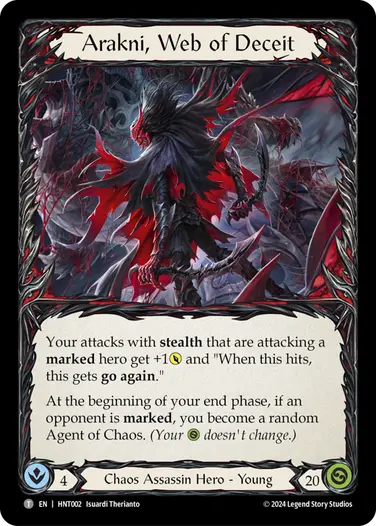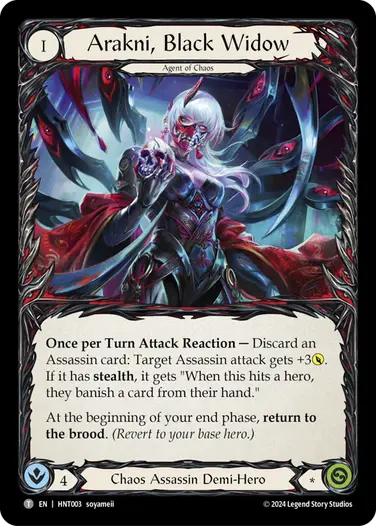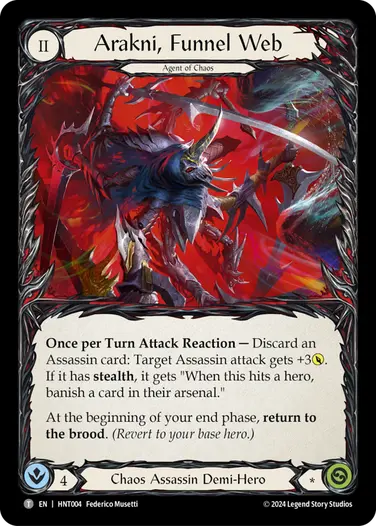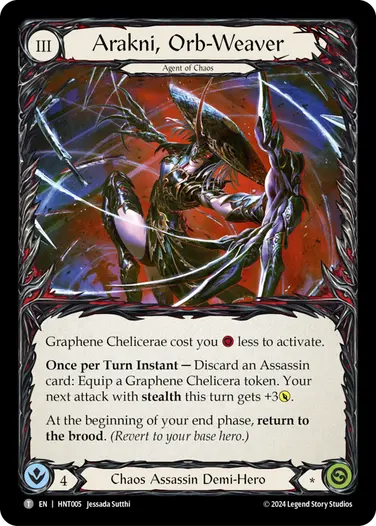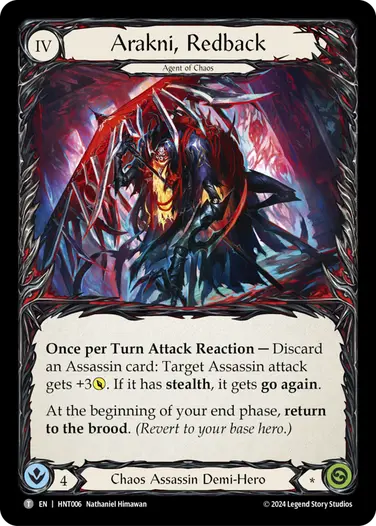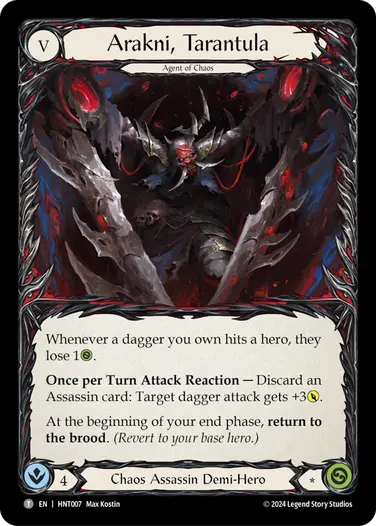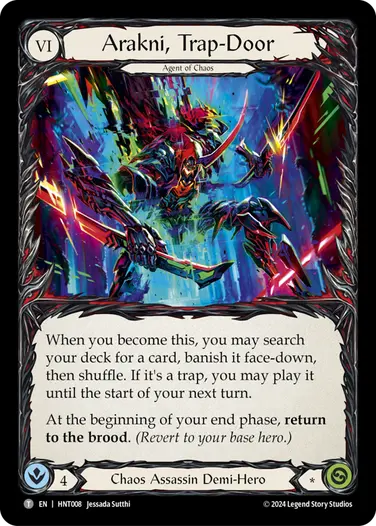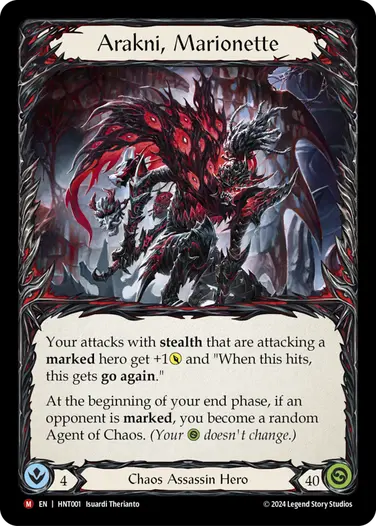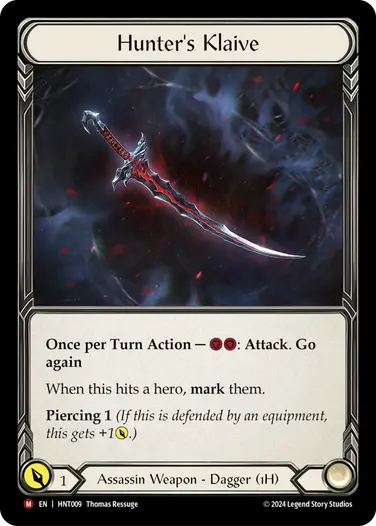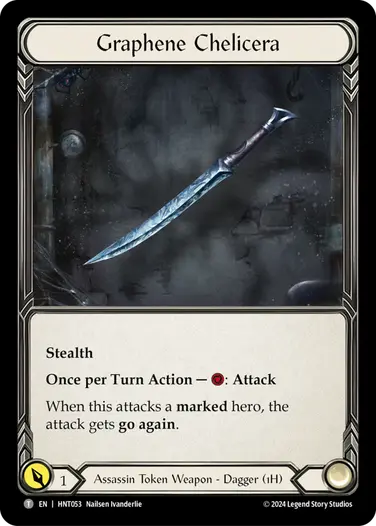Legend Story Studios developer Karol lifts the curtain of the Dev Room so we can take a peek behind the scenes. Learn about the work that went into designing, testing, and evolving the iconic cards you know and love today. Sometimes all a card needs to be great is a Dev Touch!
“Morning, everyone!” Lead Developer Bryan Gottlieb called out to the Dev Room. “Who can guess how many Araknis we’ll feature in the next set?”
“If you said seven… wait, eight… nine? One of those is correct... I think.”
Our minds were already melting trying to picture a world with nine more Araknis and development on The Hunted hadn’t even begun. What started as a lighthearted riddle quickly spiraled into total chaos in what ended up being one of our biggest development challenges yet.
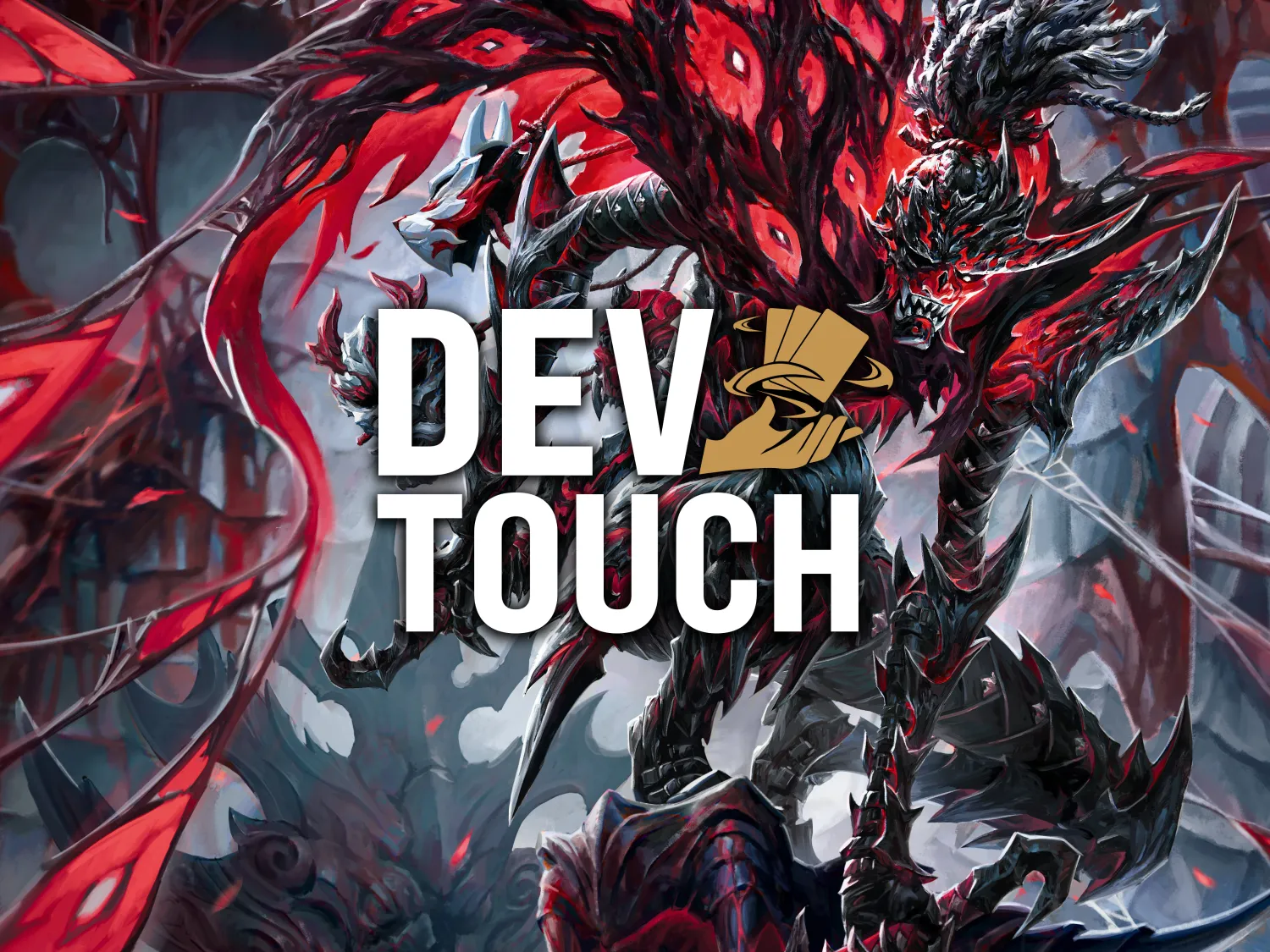
In most draft sets, balancing hero identity as well as Limited versus Constructed formats is hard enough. With Arakni, it meant designing a unique young Chaos Assassin, a distinct adult version, and six different Agents of Chaos shared between both versions. That’s seven heroes for Limited, and seven for Constructed. Every one of them had to make sense in both formats.
Despite all this, the whole development squad was ready for the challenge.
Arakni, Web of Deceit’s first version was fully immersed into the lore. They began the game marked and flipped when damaged while marked. The +1 power bonus and go again was only active while Arakni was marked. The opponent had to mark and damage Arakni to trigger the flip.
This tied beautifully into the narrative: Cindra or Fang lands a blow, only for Arakni to vanish into smoke—re-emerging as an Agent of Chaos. A royal hunt turned into an elaborate misdirection, in which the hunter was actually the one hunted.
Unfortunately, this didn’t translate into clean gameplay. Tracking was messy. We'd forget to mark, flip, or trigger the effects amidst the chaos of turns. Arakni might flip mid-opponent’s turn, giving the Arakni player little chance to plan ahead. The Agents of Chaos themselves were quite different from the final versions, too.
Most early Agents had only static abilities. Black Widow and Funnel Web disrupted hand and arsenal. Orb Weaver drew a card with Graphene Chelicera. Tarantula caused life loss on dagger hits. Redback was the big juicer—it gave all red attacks with stealth +1 power and go again.
In Constructed, Marionette would get marked on damage, then flip if damaged while marked, again leaving the timing to the opponent. This led to weird interactions: Arakni players could be prepping their stealth attack against Kano, hoping to hit in order to get go again, then bam, at instant speed they take arcane damage and get flipped into Trap-Door. It also gave strange incentives to opponents—should they mark Arakni, flip Arakni, or neither? The Arakni players ended up bearing the brunt of the chaos.
As for deckbuilding, functional Arakni decks were asked to:
- Mark the opponent
- Include mark payoffs
- Retrieve daggers
- Run attack reactions for on-hits
- Run traps
- Include dagger synergies
- Find ways to get go again
- Support Agent-specific strategies (e.g. red stealth cards for Redback)
We were stacking complexity upon complexity. At one point, the most competitive Arakni builds simply relied on generics just to keep up on damage. Still, the concept of random flipping into an Agent of Chaos was too compelling to abandon.
First, we tackled tracking. By having Arakni mark the opponent and check for a flip at the end of their own turn, we removed most of the confusion. No more surprise flips during the opponent’s turn. The transformation was now consistent, and players could plan the whole turn cycle around it.
This change worked wonders in both Limited and Constructed. Best of all, this let us unify the text on Web of Deceit and Marionette. Since both heroes shared the same ability, their gameplay incentives were more aligned. We could balance the rest of the cards in the set towards the same hero, instead of splitting the design across two divergent paths.
Despite the steady improvements, Classic Constructed still had an issue: marking was unreliable. Mark of the Huntsman worked in shorter formats, but Classic Constructed demanded repeated hits, which came at a real cost.
One day, senior developer Rohan Khanna suggested trialing a simple fix: “Let’s try a dagger that doesn’t break on-hit, like Spider’s Bite, just to test how marking feels.”
That test run changed everything. Suddenly the hero felt cohesive. Marking was reliable and play patterns opened up beautifully. Hunter’s Klaive was born.
As for the Agents of Chaos, they were fun, but their initial designs each demanded too much specific support and pulled decks in conflicting directions. But one component stood out: Graphene Chelicera. It was the needle and thread that tied everything together. It had stealth, it was a dagger attack, a mark pay-off, and a way to extend the turn. So we leaned into it. Nearly every Agent was updated to synergize with Graphene Chelicera in some way.
We also gave the Agents activated abilities, unlocking much-needed flexibility. Traps became usable as attack reactions. Excess stealth attack actions could be converted into making threats go tall—the complexity of Arakni’s deckbuilding smoothed out and felt satisfying to pilot.
After countless iterations of different Agents, timing windows, and the card-pool itself, we finally hit the right balance. Arakni became the ultimate expression of calculated chaos. The pieces interconnected in subtle ways, rewarding mastery without losing the wild, unpredictable flavor we loved.
And perhaps most importantly, chaos now worked with Arakni, not against them.
To this day, Arakni, Marionette remains one of the most beloved heroes in the Dev Room. As for Slippy… well... Slippy just kind of slipped through the cracks.
